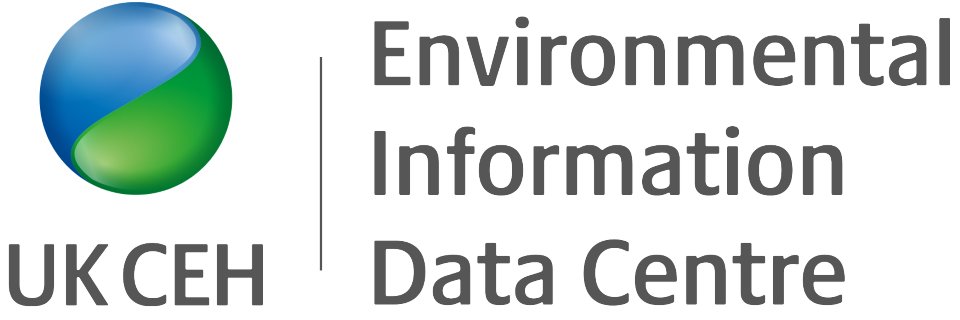
These data are held and managed by the Environmental Information Data Centre
For more details and to access the data, go to https://catalogue.ceh.ac.uk/id/0fbb2c90-5b54-427a-a083-55c022802a80
For more details and to access the data, go to https://catalogue.ceh.ac.uk/id/0fbb2c90-5b54-427a-a083-55c022802a80
Brand, A.; Chadwick, E.A.; Shore, R.F.
Biological characteristics, liver metal concentrations, habitat biogeochemistry and habitat contamination sources of UK otters (2006-2017)
https://doi.org/10.5285/0fbb2c90-5b54-427a-a083-55c022802a80
Cite this dataset as:
Brand, A.; Chadwick, E.A.; Shore, R.F. (2019). Biological characteristics, liver metal concentrations, habitat biogeochemistry and habitat contamination sources of UK otters (2006-2017). NERC Environmental Information Data Centre. https://doi.org/10.5285/0fbb2c90-5b54-427a-a083-55c022802a80
Download/Access
PLEASE NOTE:
By accessing or using this dataset, you agree to the terms of the relevant licence agreement(s). You will ensure that this dataset is cited in any publication that describes research in which the data have been used.
© Natural Environment Research Council
© Cardiff University
This dataset is available under the terms of the Open Government Licence 
The dataset details the biological characteristics and concentrations of toxic metals/semi-metals in liver tissue from 278 Eurasian otters (Lutra lutra) that died across England and Wales during the period 2006-2017.
For each otter carcass, location (National Grid Reference) was recorded. These locations were used to collate data describing spatial variation in stream and soil biochemistry, weather, and potential anthropogenic sources of contaminants in the otter's habitat from a range of sources.
This data was collected as part of the Cardiff University Otter Project. This project was supported in part by a grant from the Esme Fairbairn Foundation. The CEH contribution was supported the Natural Environment Research Council award number NE/R016429/1 as part of the UK-SCaPE programme delivering National Capability. This study contains model estimates of topsoil properties [Countryside Survey] and British Geological Survey data owned by © NERC as well as Ordnance Survey data owned by © Crown copyright and database right 2007.
For each otter carcass, location (National Grid Reference) was recorded. These locations were used to collate data describing spatial variation in stream and soil biochemistry, weather, and potential anthropogenic sources of contaminants in the otter's habitat from a range of sources.
This data was collected as part of the Cardiff University Otter Project. This project was supported in part by a grant from the Esme Fairbairn Foundation. The CEH contribution was supported the Natural Environment Research Council award number NE/R016429/1 as part of the UK-SCaPE programme delivering National Capability. This study contains model estimates of topsoil properties [Countryside Survey] and British Geological Survey data owned by © NERC as well as Ordnance Survey data owned by © Crown copyright and database right 2007.
Publication date: 2019-10-21
Format
Comma-separated values (CSV)
Spatial information
Study area
Spatial representation type
Tabular (text)
Spatial reference system
OSGB 1936 / British National Grid
Temporal information
Temporal extent
2006-01-01 to 2017-12-31
Provenance & quality
Carcasses from 278 Eurasian otters (Lutra lutra), sent in to Cardiff University Otter Project (www.cardiff.ac.uk/otter-project) between 2006 and 2017, were subjected to a detailed post-mortem examination. This examination included the documentation of phenotypic characteristics (e.g. sex, length, weight, age class) and the collection of liver tissue samples. Liver tissue samples were acid digested after which toxic metals/semi-metals were quantified using Inductively Coupled Plasma Mass Spectrometry (ICP-MS) at the Centre for Ecology & Hydrology in Lancaster.
For each otter carcass, location (National Grid Reference) and date of collection was recorded. Otter locations were used as the centre of 20-km-diameter circles that were assumed to be the otter's habitat range. For each 20-km-diameter circle, data describing spatial variation in habitat biogeochemistry and habitat contamination sources was collated from a range of sources.
Geological and anthropogenic variables were summarised either as mean values (soil elements, soil pH, sediment elements, stream pH, rainfall, silver nanoparticle concentrations in surface water, human population density) or sum values (number of consented discharges to controlled waters, annual mass inputs of metals to controlled waters).
For each otter carcass, location (National Grid Reference) and date of collection was recorded. Otter locations were used as the centre of 20-km-diameter circles that were assumed to be the otter's habitat range. For each 20-km-diameter circle, data describing spatial variation in habitat biogeochemistry and habitat contamination sources was collated from a range of sources.
Geological and anthropogenic variables were summarised either as mean values (soil elements, soil pH, sediment elements, stream pH, rainfall, silver nanoparticle concentrations in surface water, human population density) or sum values (number of consented discharges to controlled waters, annual mass inputs of metals to controlled waters).
Licensing and constraints
This dataset is available under the terms of the Open Government Licence 
Cite this dataset as:
Brand, A.; Chadwick, E.A.; Shore, R.F. (2019). Biological characteristics, liver metal concentrations, habitat biogeochemistry and habitat contamination sources of UK otters (2006-2017). NERC Environmental Information Data Centre. https://doi.org/10.5285/0fbb2c90-5b54-427a-a083-55c022802a80
© Natural Environment Research Council
© Cardiff University
Citations
Brand, A.-F., Hynes, J., Walker, L.A., Glόria Pereira, M., Lawlor, A.J., Williams, R.J., Shore, R.F., & Chadwick, E.A. (2020). Biological and anthropogenic predictors of metal concentration in the Eurasian otter, a sentinel of freshwater ecosystems. In Environmental Pollution (Vol. 266, p. 115280). Elsevier BV. https://doi.org/10.1016/j.envpol.2020.115280
Correspondence/contact details
Authors
Other contacts
Custodian
NERC EDS Environmental Information Data Centre
info@eidc.ac.uk
Publisher
NERC Environmental Information Data Centre
info@eidc.ac.uk

 https://orcid.org/0000-0002-1779-8691
https://orcid.org/0000-0002-1779-8691